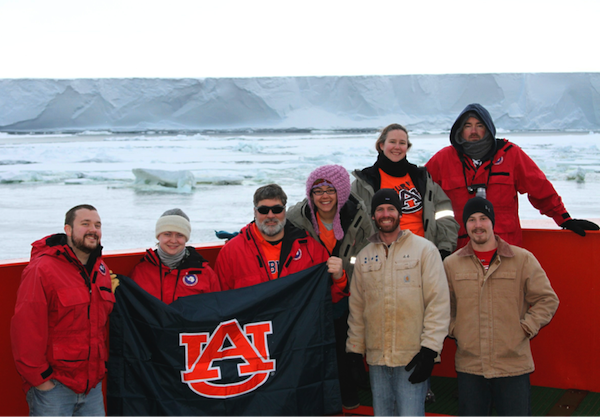COSAM News Articles 2019 September NSF Grant Offers Additional Biological Sciences Research in Antarctica
NSF Grant Offers Additional Biological Sciences Research in Antarctica
Dr. Ken Halanych, the Schneller Endowed Chair of the Auburn University Department of Biological Sciences, has recently been awarded a grant from the National Science Foundation to continue his research on marine organisms in Antarctica.
Of the more than $1 million collaborative research grant, $667,605 was awarded to Dr. Halanych while the remainder was awarded to Dr. Andy Mahon of Central Michigan University.
Dr. Halanych, whose research focuses on marine invertebrate evolution and genomics, has participated in six previous research trips to Antarctica, the most recent in 2013. This grant will fund two additional trips. The upcoming trips, the first of which will take place in November or December of 2020, will explore new areas of the Antarctic.
The trips will explore the possibility of a transAntarctic seaway that may have existed, and is likely to exist again, when the ice shelf collapses. Dr. Halanych and colleagues will use genomic tools to examine marine invertebrate species in the Antarctic.
“For example, a species of sea star that’s on one side is claimed to be the same species on the exact opposite side of the continent,” Dr. Halanych explained. “We don’t know if that’s true. They look the same, but we don’t know if they’re genetically the same.”
The trip will also consist of research into whether the Antarctic is a single land mass and how climate change is affecting the area.
“There has been a lot of talk about ice shelf melting and collapsing in Greenland this summer, the same thing is happening in the Antarctic,” Dr. Halanych said. “The difference is, in the Antarctic when a piece of ice breaks off it’s sometimes the size of the state of New Hampshire. We know from the geological past there has been times when the western Antarctic ice sheet completely collapses. That’s sort of starting to happen. When this ice was gone we know instead of being a solid land mass, it looks it is a series of islands. We’re trying to use genetic data to see if there is a connection between the species and that will let us know whether this is really one big land mass or whether it’s a chain of islands.”
Each research trip will last approximately five weeks.
Latest Headlines
-
02/12/2025
-
02/11/2025
-
02/10/2025
-
01/30/2025
-
12/03/2024

